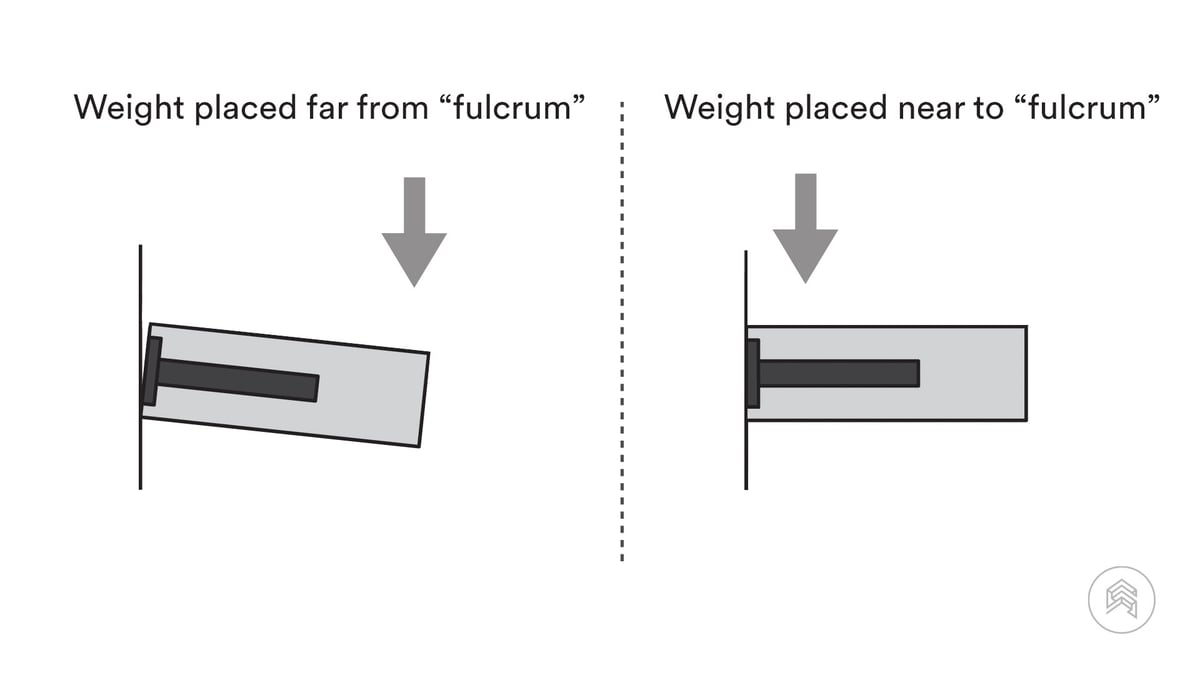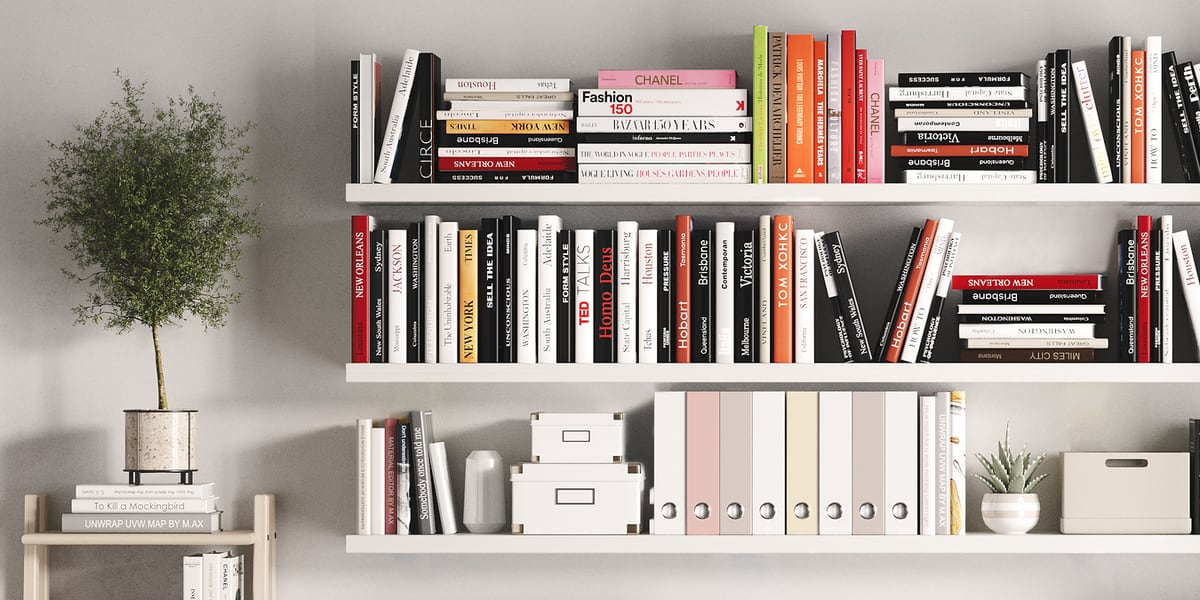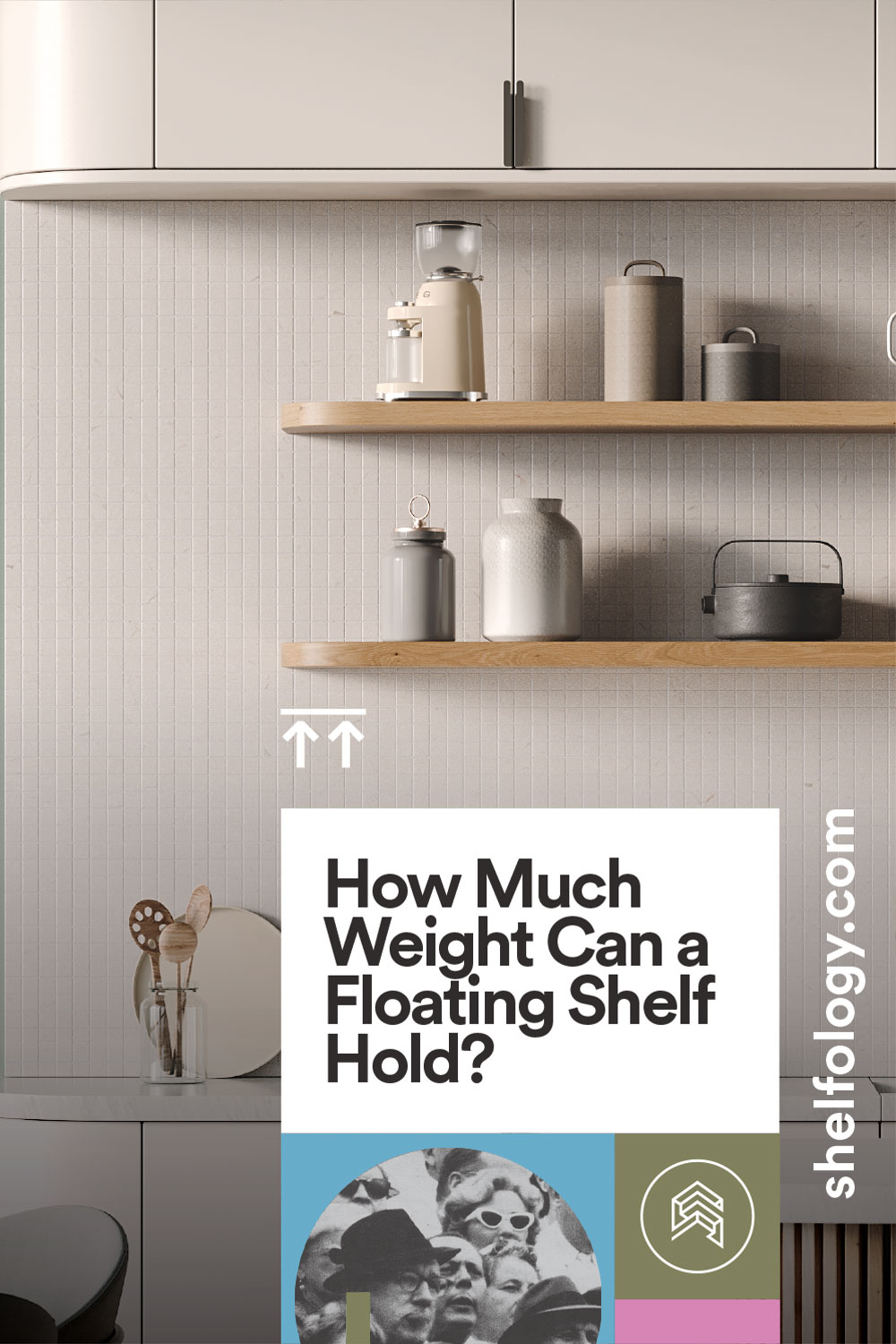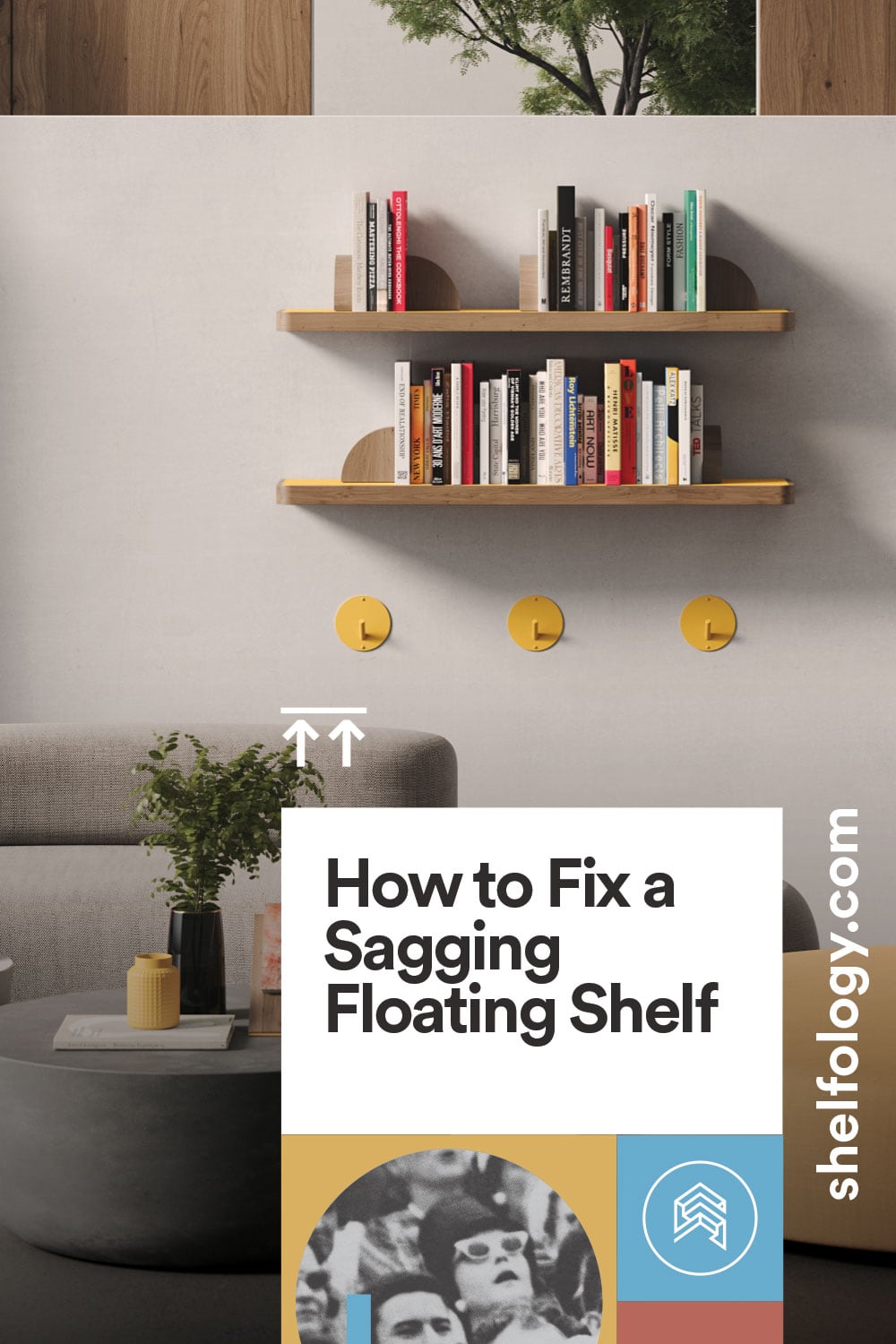Floating shelves are a popular choice for adding storage and style to a room. But figuring out the “right” or “ideal” depth for your floating shelves can be confusing. In fact, “how deep should my floating shelves be” is one of the most frequent questions fielded by our cadre of Shelf Nerds. So today we are going to clarify why and how the depth of a floating shelf affects its overall weight capacity.

What Does “Depth” Mean for Floating Shelves?
When we talk about shelf “depth”, we’re referring to how far the shelf sticks out from the wall horizontally. For example, one of our Fat Lippie ledges has a shelf depth of 3–7 inches, and 3 inches is certainly plenty for a small frame or a record album. On the other hand, our Yuri XD Floating Desk Brackets can hold up a shelf surface of up to 30 inches in depth.
Now that’s a huge range, obviously, and the mounting hardware for those two options are extremely different… but WHY?

How Does Depth Impact a Floating Shelf’s Strength?
We’ve briefly covered this in a previous blog (link: are floating shelves strong enough for books?), but a recap is certainly in order.
We can think of a floating shelf system as a simple machine—because it is. The attachments to the wall are the fulcrum, and the force with which the hardware is drilled into the wall gives us the basic guideline for how much our shelf can hold. Generally speaking, shelves drilled and installed correctly into studs can hold up to 50 lbs per attachment point.
So, for a floating shelf with three pegs drilled into studs, you can expect a total weight capacity of 150 pounds. And that sounds like a lot… until you consider the physics.
The floating shelf system is like a see-saw with a fulcrum in the middle. As long as we stay within that force or load capacity (150 pounds dispersed evenly over the shelf), we’ll be safe. However, if we start messing with the force distribution by a) extending shelf depth or b) placing weight further and further from the fulcrum (the place where the shelf is attached to the wall), we begin to compromise its stability.

If you’re still confused, think of it like a true see-saw. If we have a 150-pound person on the left side of the see-saw, seated in the center, we could easily displace that individual by placing a 150-pound individual on the opposite, outer edge. As long as that person on the right is further to the outside of the see-saw, the left individual will be displaced.
It’s exactly the same with a floating shelf—improper force distribution will cause the shelf to sag (or even break), just like the see-saw.
How Do We Get the Strongest Floating Shelf?

If you’re looking for a shelf that outperforms whatever you’ll be putting on it, you need to do a few things:
-
Don’t skimp on your shelf. Strong hardware is pricier, but it’s worth it.
-
Always drill into studs. Your shelf’s weight rating is based on proper installation!
-
Don’t get a shelf that is deeper than what you need. Bigger is NOT always better.
-
Evenly distribute weight on your floating shelf.
Choosing the right depth for your floating shelves depends on various factors such as the items you want to display, the location of the shelves, the weight capacity, and the aesthetic appeal you're going for. By considering these factors and the above guidelines, you can choose the ideal depth for your floating shelves.
Are you ready to start designing your new, super-strong floating shelf display?! Head on over to our shop to browse our ready-to-hang systems or take a look through some of our inspiring design blogs!







